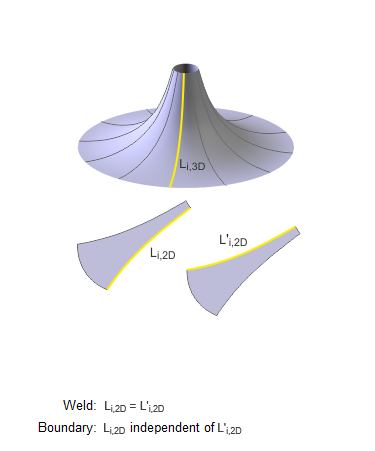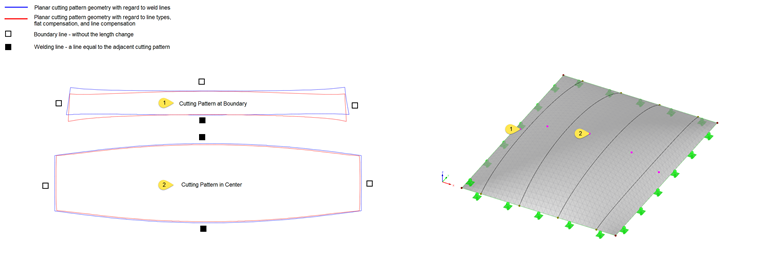- Surface compensation,
- Boundary line compensation, and
- Boundary line type.
Question
Why is the compensated cutting pattern length of a membrane surface incompatible with the defined compensation?
Why is the compensated cutting pattern length of a membrane surface incompatible with the defined compensation?
Answer:
The integral flattening process in RF‑CUTTING‑PATTERN does not flatten each cutting pattern individually, but rather the complete model geometry in one step. In this case, the line type of the respective cutting pattern units also has an effect on the adjacent cutting patterns.If there is a welding line between two cutting patterns, the program ensures that the lines in the connecting area are equal. The geometry of the cutting patterns is determined so that the relevant edge lengths of the cutting patterns are identical.
The "boundary line" line type allows for independent examination of the adjacent cutting pattern units. The length of the boundary lines in the adjacent area may be different.
Basically, the cutting units have the following conditions
Thus, the program is close to the optimum solution. The affected cutting patterns are particularly noticeable due to their curvature in relation to the uncompensated solution. Due to the greater degree of modification, these cutting patterns also differ slightly from the defined compensation specifications, but are in equilibrium with all other cutting patterns because of the overall calculation.
Do you have any questions?
Recommended Products for You








